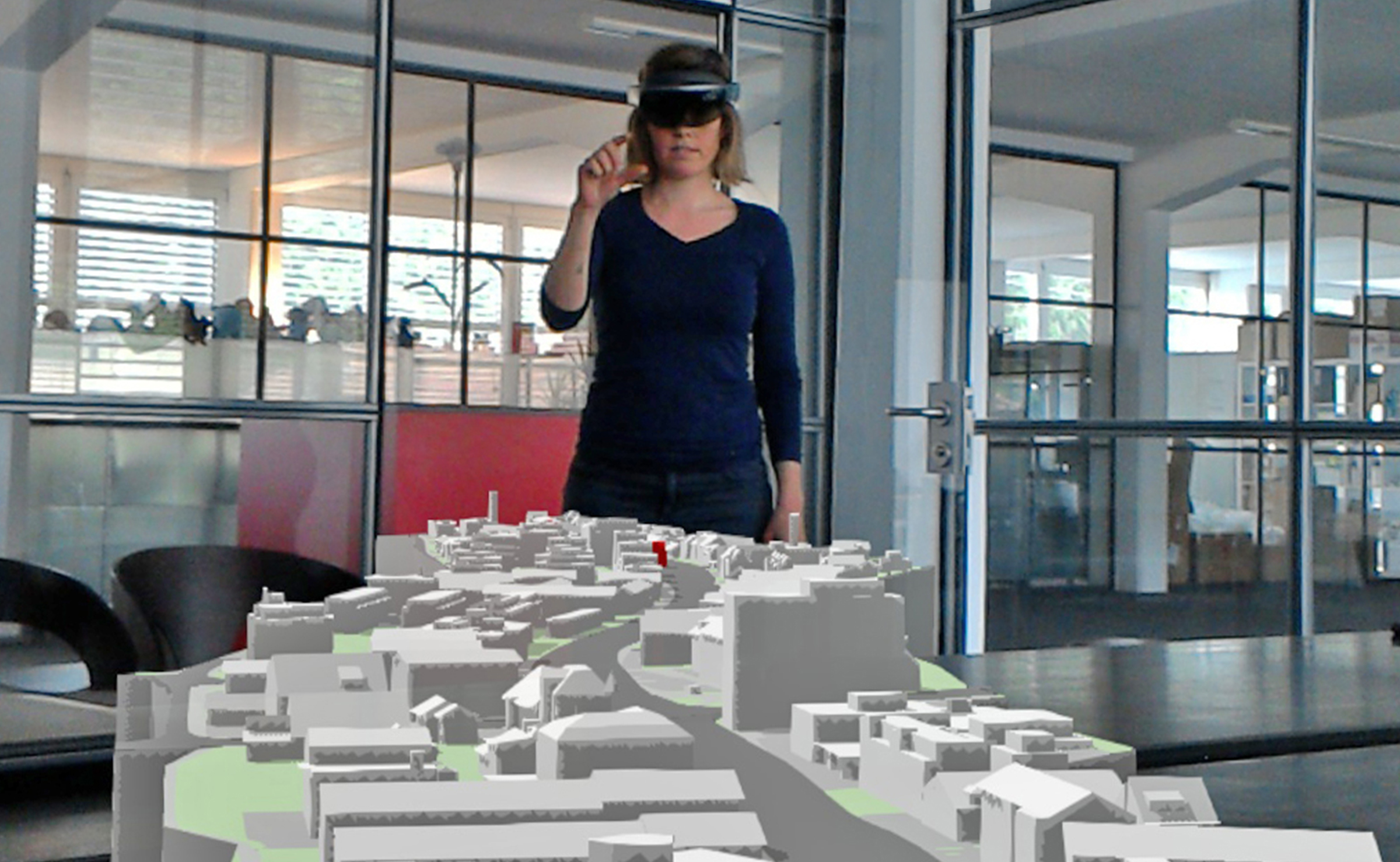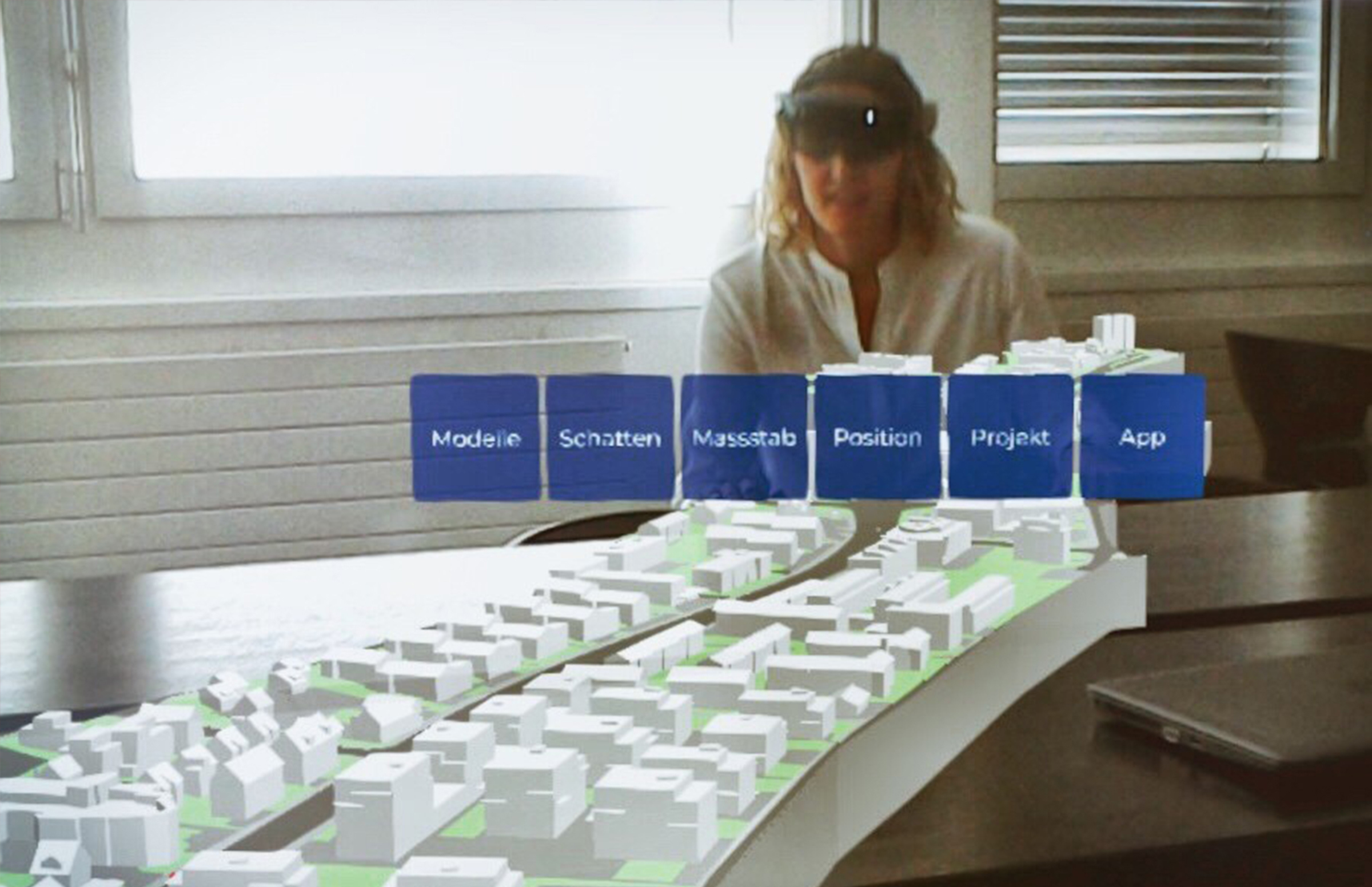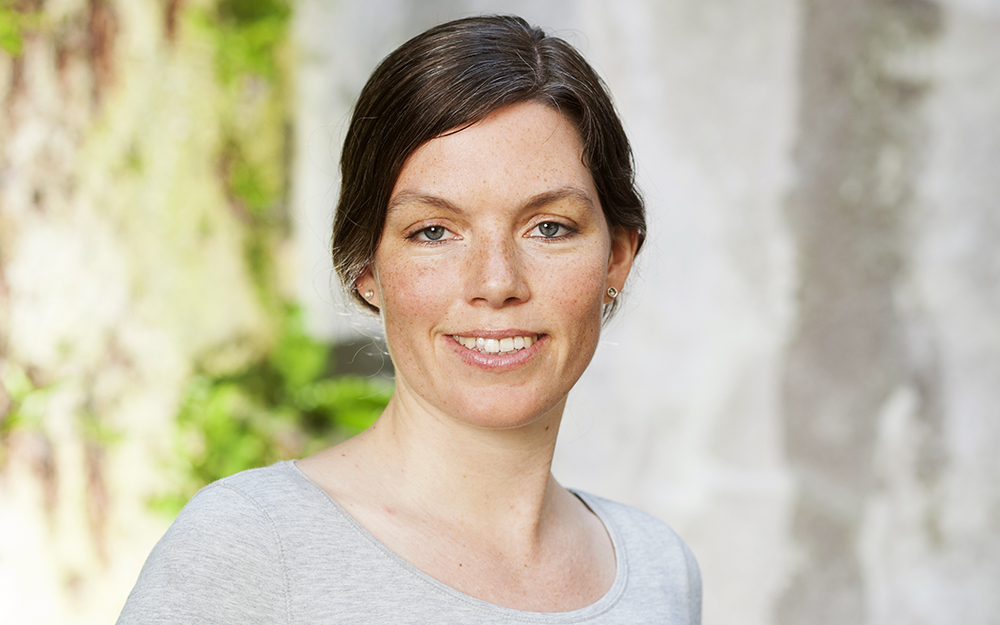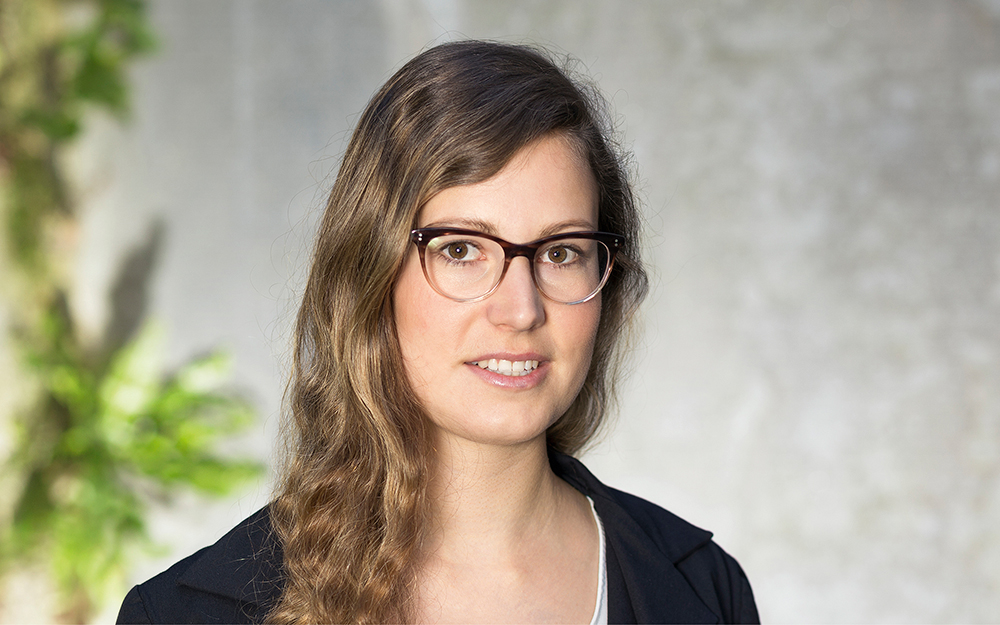Augmented Reality for city and site planning projects
As part of an EBP initiative to promote innovation, a team of spatial planners, architects and IT experts has developed a tool known as a “digital planning inspector” that enables its users to interactively view planning studies at various scales with the help of a 3D HoloLens. The HoloLens allows multiple users to view and discuss combinations of real environments and 3D models.
According to the project team, EBP is the first company in Switzerland to offer a digital planning inspector of this sort. As team member and spatial planner Kaspar Fischer explains, “Our approach allows us to complete planning assignments digitally to provide dynamic information to complement plaster models, and, ultimately, to be able to work without the physical models. The process means that we can provide enhanced support for our clients when it comes to creating virtual models, processing these models and optimizing planning outcomes.”

Digital spatial planning for development projects
Working together with our clients, the EBP team creates digital models of development sites. The model data, as well as instructions for their augmentation, are then made available to the relevant planning teams to provide a basis for the submission of development proposals.
“Digital models are highly efficient”
“Digital models will be highly efficient in general, but especially when it comes to distribu-tion and storage,” says spatial planner Deborah Heitz. “This because all you need to do is send the data to the planning teams. There are no plaster models involved. And the processing instructions provide the team members with a practical guideline for creating their enhanced models.”
Unlimited applications
EBP makes an entire IT infrastructure available to clients and planning teams so that they can come together in the framework of workshops to discuss development proposals. “We support evaluation committees when it comes to using the technology. And we assist planning teams with the creation of their digital models,” says Fischer by way of explaining EBP’s service provision.

Working with digital models is especially advantageous in the context of evaluation workshops because it gives all of the participants an opportunity to view critical planning features from the same perspective and at the desired scale. Moreover, users can “walk through” models at their virtual sites with the help of the HoloLens so as to arrive at a more informed assessment of the advantages and disadvantages of various project proposals. This also provides experts with a more effective means of explaining their evaluations.
EBP also makes the associated model visualizations available for purposes of reporting and project documentation.
“We can view critical planning features at the desired scale.”
“The digital models allow us to uniformly generate visualizations from all angles, at any given scale and without any costly and time-consuming installations. The same perspectives can be rendered to capture any expressive images used by the planning team. That adds a greater degree of comparability when assessing various proposals,” says Deborah Heitz, summarizing additional advantages.
Advantages for all stakeholders
The tool’s software and hardware (Microsoft HoloLens and afca HoloPlanning) enable clients and planning teams to confer with one another about models without thereby losing sight of the various stakeholders. Using a computer screen, other participants can view a given project from the perspective of the evaluation committee and follow their explanations.
“The digital planning inspector is an especially useful tool for those whose work involves quality-assurance procedures. The advantages of using digital models apply throughout the entire planning process. This includes preparation, execution, presentation and work-product communication,” says Fischer.
Project team
Our team would be happy to answer any questions you might have about our “digital planning inspector” tool:

Claude Büechi

Nicole Sulzberger
nicole.sulzberger@ebp.ch

Debora Heitz
debora.heitz@ebp.ch

Kaspar Fischer
kaspar.fischer@ebp.ch